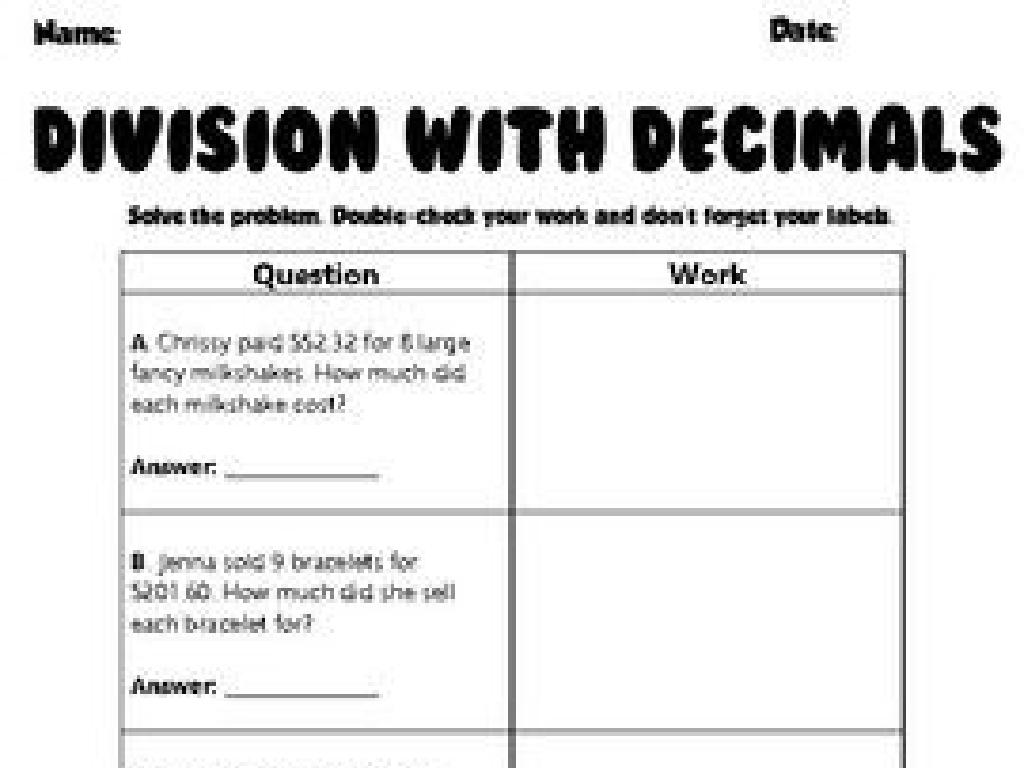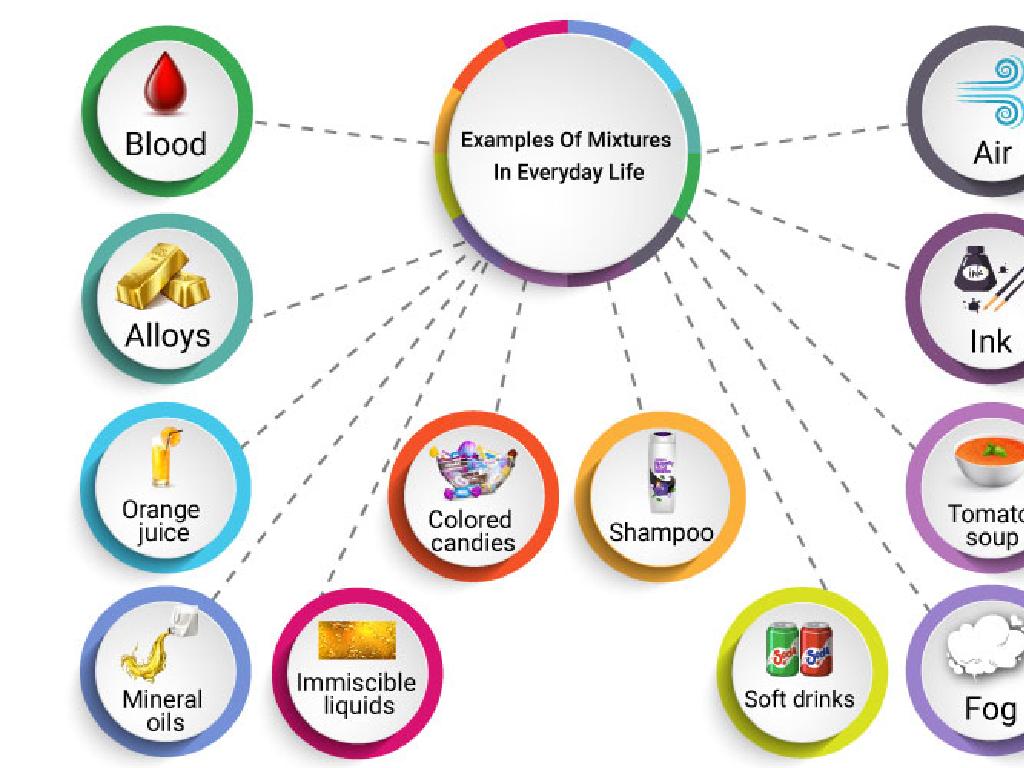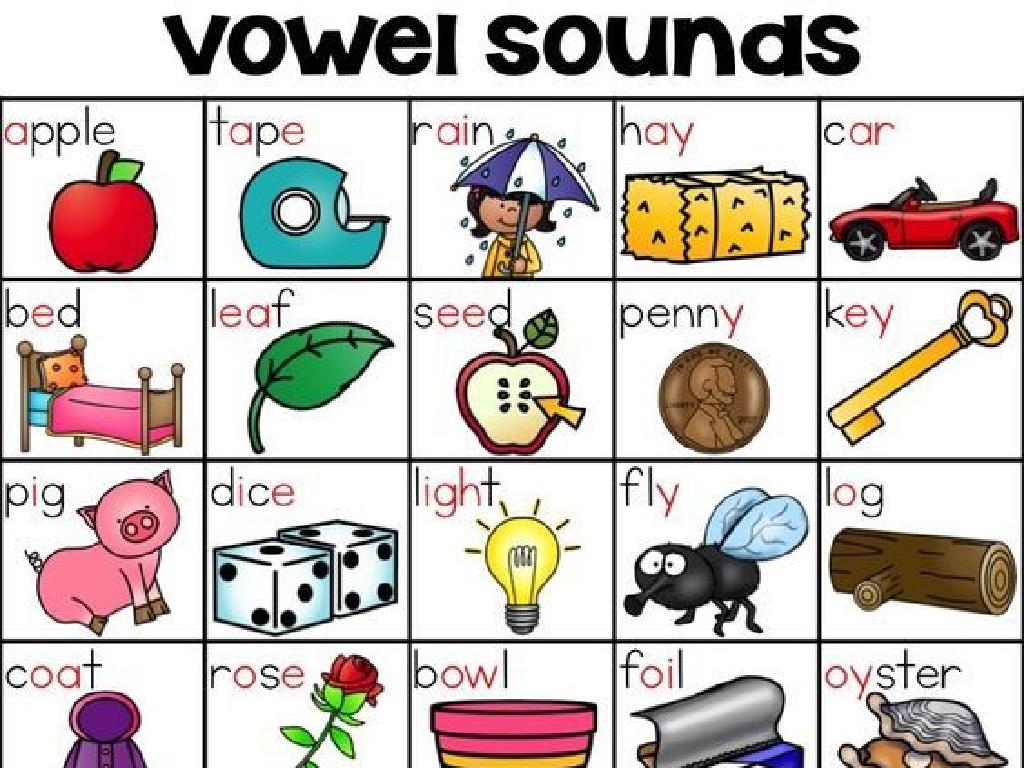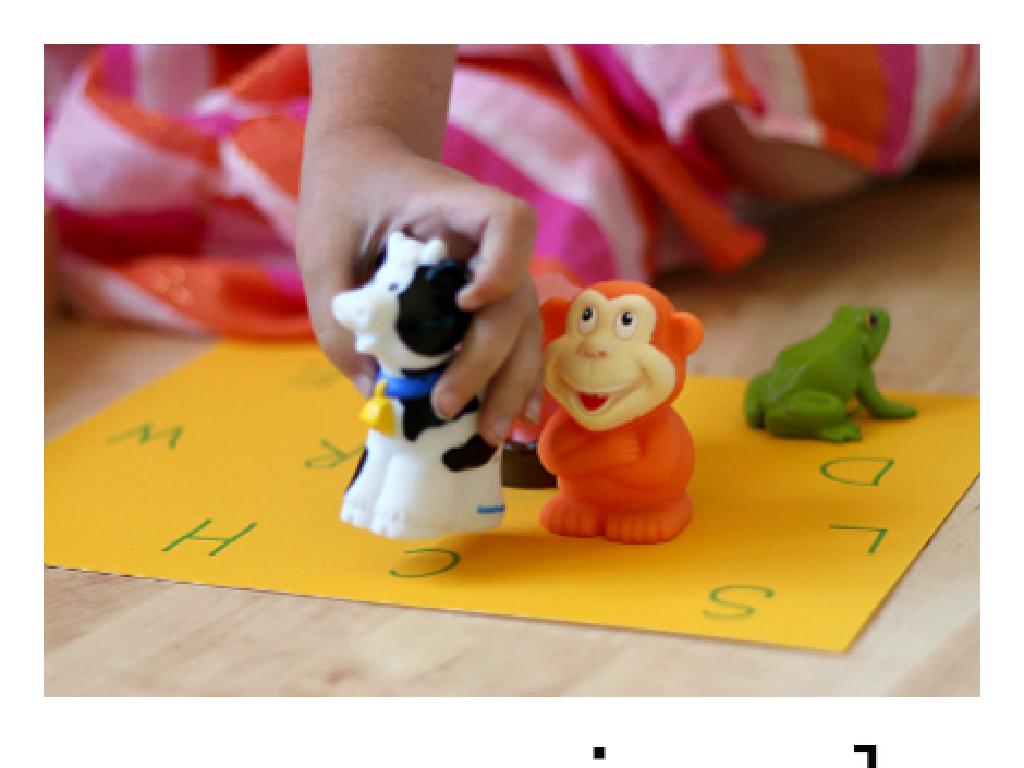Identify Functions
Subject: Math
Grade: Eighth grade
Topic: Function Concepts
Please LOG IN to download the presentation. Access is available to registered users only.
View More Content
Welcome to Functions!
– Define the concept of functions
– A function relates each input to exactly one output
– Importance of functions in math
– Functions are fundamental for describing mathematical relationships
– Functions in everyday life
– Examples: Temperature over time, distance vs. speed
– Analyzing real-life function examples
– Consider how a vending machine works: money in, selected item out
|
This slide introduces the fundamental concept of functions in mathematics, which is a cornerstone for understanding various mathematical relationships and operations. Functions are a way to describe how two quantities are related, mapping each input to a single output. Emphasize the importance of functions in not just math, but in formulating and solving real-world problems. Use relatable examples like tracking temperature changes throughout the day or how speed affects the distance traveled. Encourage students to think of functions as a machine that gives a predictable result for a given input, like a vending machine. This will help them grasp the one-to-one relationship between inputs and outputs that defines a function.
Understanding Functions in Math
– Define a function
– A function relates each input to exactly one output.
– Functions vs. general relations
– Unlike relations, functions have a single unique output for each input.
– Functions have inputs and outputs
– Input is the value you give; output is the value you get.
– Visualizing function concepts
|
Begin by defining a function as a special type of relation where each input is related to exactly one output. This is what distinguishes a function from a general relation, which can have multiple outputs for a single input. Emphasize the concept of ‘input’ and ‘output’ in functions, using examples like a vending machine: you input money (input) to get a snack (output). Use diagrams like function machines or mapping diagrams to visually represent functions. This will help students grasp the abstract concept of functions and understand how they are used to model relationships in mathematics.
Identifying Functions in Math
– Learn the Vertical Line Test
– A visual method to confirm if a graph represents a function.
– Relations vs. Functions
– Compare graphs and equations to distinguish functions from non-functions.
– Explore domain and range
– Domain: set of all possible inputs; Range: set of all possible outputs.
– Practice with examples
|
This slide introduces the concept of identifying functions in mathematics. Start by explaining the Vertical Line Test, a technique used to determine if a graph represents a function by checking if a vertical line intersects the graph at more than one point. Provide visual examples of relations that are and are not functions, highlighting the differences. Clarify the concepts of domain and range, ensuring students understand that the domain is the set of all possible input values, while the range is the set of all possible outputs. Incorporate practice examples where students apply these concepts to solidify their understanding. Encourage students to ask questions and work through problems collaboratively.
Understanding Function Notation
– Writing functions with f(x)
– f(x) represents function output for input x
– Interpreting f(x) notation
– f(x) is the value of the function for given x
– Evaluating functions at values
– Substitute x in the function to find f(x)
– Practice with different inputs
– Use various x values to see how f(x) changes
|
This slide introduces students to the concept of function notation, a fundamental aspect of algebra. Function notation, written as f(x), is a way to represent the outputs of a function for specific inputs. It’s important for students to understand that ‘f’ names the function and ‘x’ is the variable input. When interpreting function notation, students should see f(x) as the value of the function when x is the input. To evaluate functions, they will learn to replace x with the given number and perform the necessary calculations to find the output. Encourage students to practice with different inputs to observe how the output, f(x), changes with each input. This will help solidify their understanding of functions and how to work with them.
Types of Functions in Mathematics
– Explore linear functions
– Linear functions have a constant rate of change, represented by a straight line graph.
– Examine quadratic functions
– Quadratic functions form a parabola, with a vertex and axis of symmetry.
– Discover exponential functions
– Exponential functions grow rapidly, used in population & financial models.
– Real-world function applications
|
This slide introduces students to different types of functions they will encounter in algebra. Linear functions are the simplest, with a constant slope and straight-line graphs. Quadratic functions are more complex, with their graphs forming parabolas that have distinct properties such as a vertex and an axis of symmetry. Exponential functions are powerful, illustrating rapid growth or decay, and are often applied in real-world scenarios like population growth or interest calculations. Encourage students to think of examples from daily life that might fit into each category of functions. Provide practice problems for each function type to solidify their understanding.
Graphing Functions
– Graph functions from tables
– Plot points from a table to visualize the function
– Key features of function graphs
– Identify the vertex, axis of symmetry, and intercepts
– Use technology for graphing
– Graphing calculators or software can aid in visualization
– Class activity: Graphing practice
|
This slide introduces students to the concept of graphing functions by using a table of values and identifying key features such as the vertex, axis of symmetry, and x/y intercepts. Emphasize the importance of plotting points accurately and recognizing patterns within the graph. Introduce the use of technology, such as graphing calculators or software, to assist in creating more complex graphs. The class activity will involve students graphing a function by hand and then verifying their graph using technology. Provide different functions for students to graph, ensuring a variety of linear, quadratic, and absolute value functions to cover a range of examples.
Class Activity: Function or Not?
– Receive a worksheet with graphs
– Determine relations that are functions
– A function has only one output for each input
– Apply the Vertical Line Test
– If a vertical line intersects a graph more than once, it’s not a function
– Discuss findings with the class
|
This activity is designed to help students visually identify functions among relations. Distribute worksheets with various graphs and relations. Students should analyze each relation to determine if it’s a function by checking if every input has a unique output. Teach them to use the Vertical Line Test on the graphs: if a vertical line crosses the graph in more than one place, then the graph does not represent a function. After completing the worksheet, students will discuss their findings. This will reinforce the concept of functions and provide practice in applying the Vertical Line Test. Possible variations of the activity could include pairs work, group discussions, or creating their own graphs to challenge peers.
Wrapping Up: Functions Identification
– Recap function identification
– Review the methods to determine if a relation is a function.
– Mastery of functions is key
– Understanding functions is crucial for future math concepts.
– Homework: Function worksheet
– Complete the provided worksheet to practice identifying functions.
|
As we conclude today’s lesson, it’s important to revisit the main points about identifying functions. Ensure students understand the ‘vertical line test’ and how to apply it to different relations. Emphasize the importance of mastering this concept as it is foundational for higher-level mathematics, including algebra and calculus. For homework, students are assigned a worksheet that includes various exercises on identifying functions. This will reinforce their learning and provide an opportunity for practice. Encourage students to attempt all problems and remind them that this practice is crucial for their understanding of the topic. In the next class, we can review any common challenges or questions that arise from the homework.






